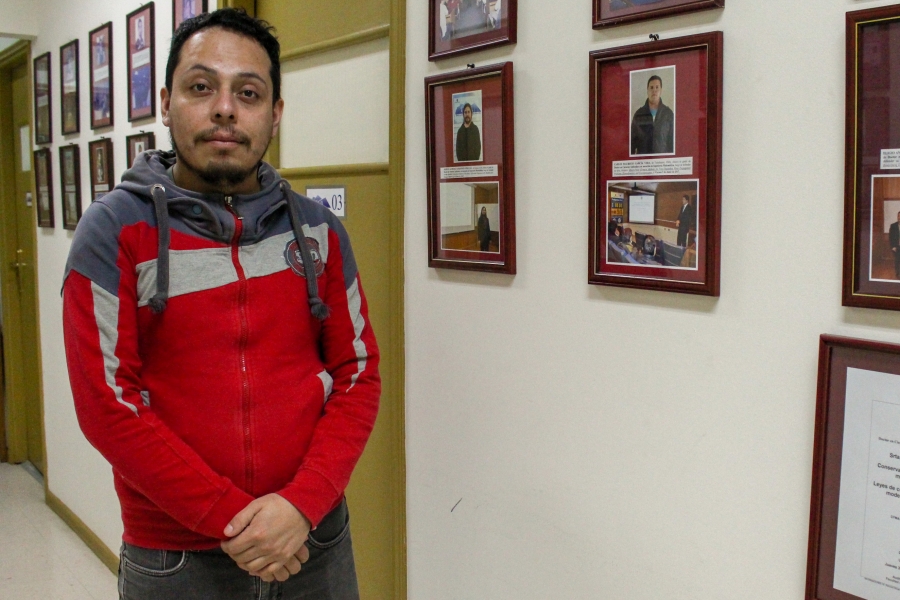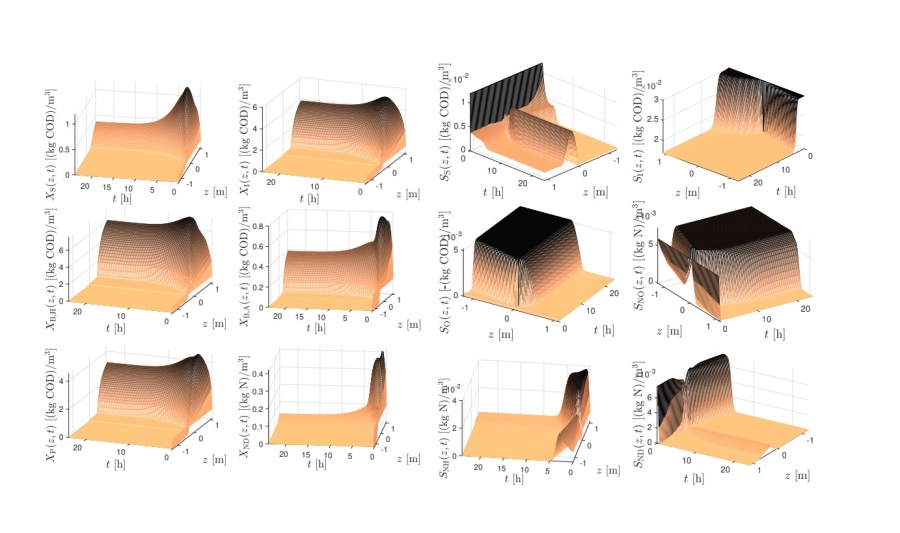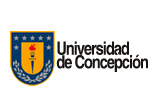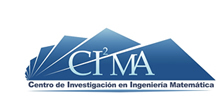News
Results of PhD thesis also have application in other productive activities, such as mining
A few weeks ago, Romel Pineda Frias became the seventieth person to reach the highest academic degree in the PhD Program in Applied Sciences with a mention in Mathematical Engineering at the Universidad de Concepción, UdeC.
 The mathematical engineer from the Universidad Central del Ecuador (Quito, Ecuador), did so by successfully defending his thesis entitled 'Reactive Sedimentation Models for Sewage Treatment' in which he was supervised by the UdeC academic Dr. Raimund Bürger and the co-direction of Drs. Julio Careaga (Radboud University, Nijmegen, The Netherlands) and Stefan Diehl (Lund University, Sweden).
The mathematical engineer from the Universidad Central del Ecuador (Quito, Ecuador), did so by successfully defending his thesis entitled 'Reactive Sedimentation Models for Sewage Treatment' in which he was supervised by the UdeC academic Dr. Raimund Bürger and the co-direction of Drs. Julio Careaga (Radboud University, Nijmegen, The Netherlands) and Stefan Diehl (Lund University, Sweden).
Now Dr. Pineda explains that his thesis work “focused on the development of a physico-mathematical model of reactive sedimentation for sequential batch reactors (SBRs)”.
“Reactive sedimentation”, he details, “is the combination of the mechanical process of sedimentation of small particles that are immersed in a fluid (containing water and substrates) and biological reactions that occur simultaneously between the particles and the substrate. The particles are microorganisms that degrade organic matter and eliminate the nutrients (nitrogen) present in the residual water”.
He explains that, among the topics covered in his postgraduate research, "the development of a modern one-dimensional mathematical model and the implementation of numerical schemes for reactive sedimentation in SBRs" stand out. The operation of the SBR is sequential, which contemplates a cycle of five different stages of operation: filling, reaction, sedimentation, extraction and inactivity (rest and removal)”.
“Conceptually, the SBR”, he elaborates, “has a device that allows adding influent (filling) or extracting effluent (extraction) from above, as well as a lower discharge opening for the removal of sediment (biomass) during the rest and removal stage. The different volumetric flows that the SBR has at the entrance (filling) or exit (extraction or removal of the sediment) give the name of the mobile border movement”.
“The governing model”, he explains, “consists of a coupled system of strongly degenerate convection-diffusion-reaction parabolic conservation law equations, the unknowns being the concentrations of the solid (bacteria; activated sludge) and liquid (substrate) components. depending on height and time. In addition, the adjustment of experimental data obtained from a pilot plant that has a secondary sedimentation tank (SST) with variable cross-sectional area to the reactive sedimentation model was carried out.
 Precisely, the development of a new model and reliable numerical schemes for the reactive sedimentation process in SBRs is one of the main applied results of his thesis, since it is, he highlights, "a tool that will help to better understand what happens in the process of SBRs in wastewater treatment. With this, the operator of the plant can know through simulations what the behavior of SBR would be like in the different stages that it has, through spatiotemporal dynamic modeling, it predicts the quality of the effluent, the oxygen demand and the production of sludge”.
Precisely, the development of a new model and reliable numerical schemes for the reactive sedimentation process in SBRs is one of the main applied results of his thesis, since it is, he highlights, "a tool that will help to better understand what happens in the process of SBRs in wastewater treatment. With this, the operator of the plant can know through simulations what the behavior of SBR would be like in the different stages that it has, through spatiotemporal dynamic modeling, it predicts the quality of the effluent, the oxygen demand and the production of sludge”.
“This modeling”, he says, “makes the process easier to understand, reduces the need for pilot studies, and saves time and investment. In addition, the model is used for diagnosis, projection, development of control strategies and optimization of the operation of the SBR process”.
As an extension of that, the applications of these results can be developed in the field of "water treatment" which has a variety of applications. As in the treatment of wastewater or mineral processing.
The researcher identifies at least three new lines of research and applications and extensions that could arise from their results. In this regard, Dr. Raimund Bürger mentions the optimization of an SBR operating plant. "For example", he details, "there is interest in designing the operation cycle optimally (adequate selection of the duration of each one of the stages), also considering that a plant normally uses several SBR units in parallel, to ensure that always one of these is in the filling stage; include a gas phase to the SBR model, since in the denitrification process the release of nitrogen gas occurs and these bubbles that are released adhere to the solid particles, which implies that the nitrogen gas bubbles move upwards while the particles solids settle, resulting in flotation of the sludge blanket in the tank.
“The second new line of research,” explains Dr. Bürger, “would focus on scientific computing: The schemes that were developed are first order in space and time. More sophisticated techniques such as IMEX and WENO are needed, high order methods to improve the numerical approximations of the discontinued solutions of the SBR present discontinuities. Finally, as a third research topic, more rigorous numerical convergence tests are pending”.
Cooperation without borders
“International collaboration in the field of scientific research, from my perspective, has incalculable value, transcends borders and allows the exchange of ideas and knowledge that enrich and enhance the results of the research”, Dr. Pineda says.
“A tangible example of this collaboration is the working relationship I have had with Dr. Stefan Diehl who was my co-tutor. He is a leading specialist in his field of research and his cooperation has generated significant contributions to science. His work together has shown that the sum of diverse expertise and perspectives can lead to breakthroughs and discoveries that might otherwise have been overlooked”.
The expert points out that “international collaboration not only benefits the researchers involved, but also has a positive impact on society in general. For example, joint research with my mentors Dr. Stefan Diehl (Lund University, Sweden), Dr. Julio Careaga (Radboud Universiteit, The Netherlands) and Dr. Raimund Bürger has enabled the development of innovative solutions for real and urgent problems, such as wastewater treatment in the SBRs process. This type of research has the potential to improve the quality of water bodies and the sustainable development of society”.
Currently, Romel's plans are to join his alma mater as an academician, in addition to "continuing and strengthening the collaboration with my thesis guide professors, as well as establishing a research bridge between the universities to strengthen cooperation to continue researching and contributing to the society".
Romel Pineda's doctoral studies were financed by the National Doctoral Scholarship of the National Research and Development Agency (ANID-PCHA 2020-21200939), an opportunity that he sincerely appreciates. The research is also part of the research projects funded by ANID Chile Fondecyt 1210610, CRHIAM (ANID/Fondap/15130015), Anillo ACT210030, and Centro de Modelamiento Matemático (CMM; ANID/BASAL/FB210005).

